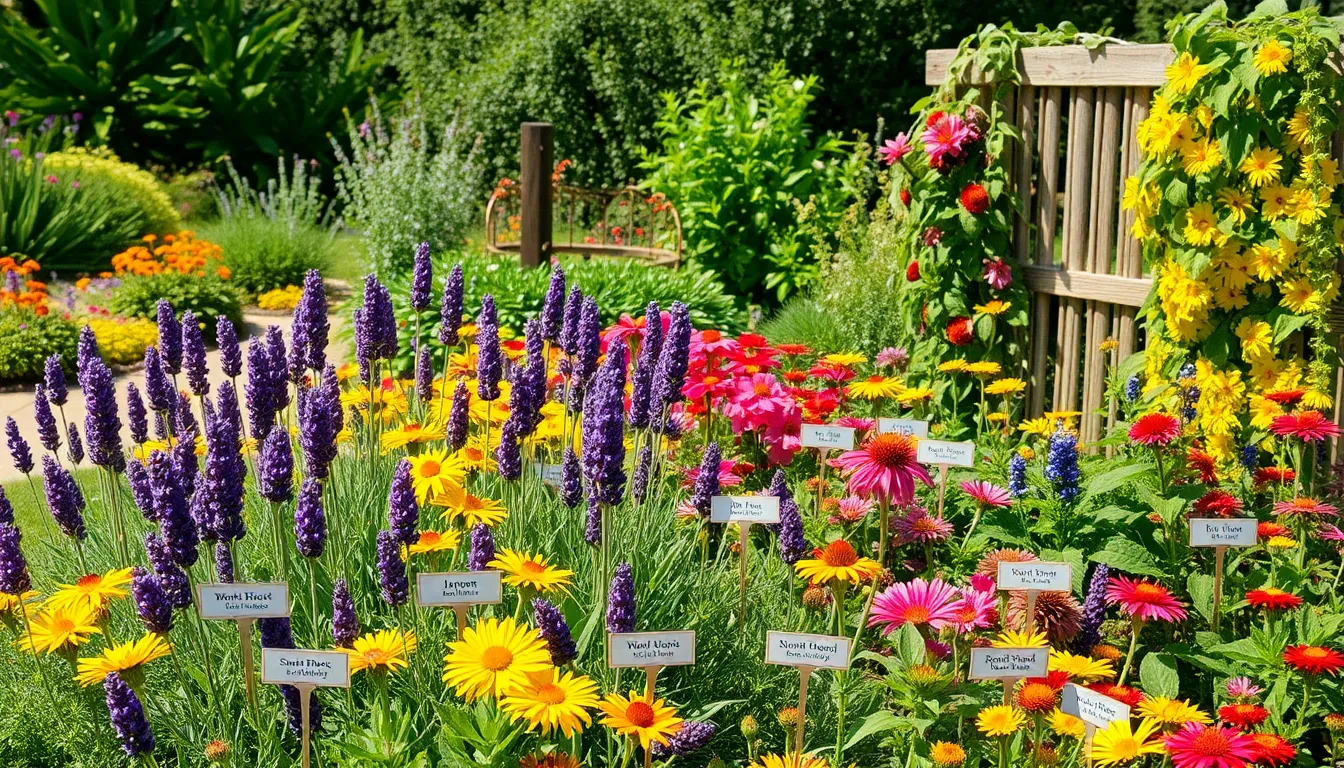Imagine stepping into your garden and being greeted by a delightful ballet of bees, butterflies, and hummingbirds, each performing their essential roles in nature’s grand symphony. Designing a pollinator garden not only brings this vibrant spectacle to your backyard but also contributes significantly to the health of our planet. Whether you’re just beginning your gardening journey or have years of experience under your belt, creating a haven for pollinators is a rewarding endeavor that benefits both your local ecosystem and your soul.
This article will guide you through the myriad benefits of establishing a pollinator garden, offering insights that cater to both novice and seasoned gardeners. You’ll discover how these gardens support biodiversity, enhance plant health, and even improve crop yields in your vegetable patch. Moreover, we’ll explore practical tips on selecting the right plants and designing a space that attracts and sustains these vital creatures. Let’s embark on this enriching gardening adventure together, where every bloom and buzz adds a layer of joy and ecological balance to your landscape.
Boosting Biodiversity in Gardens
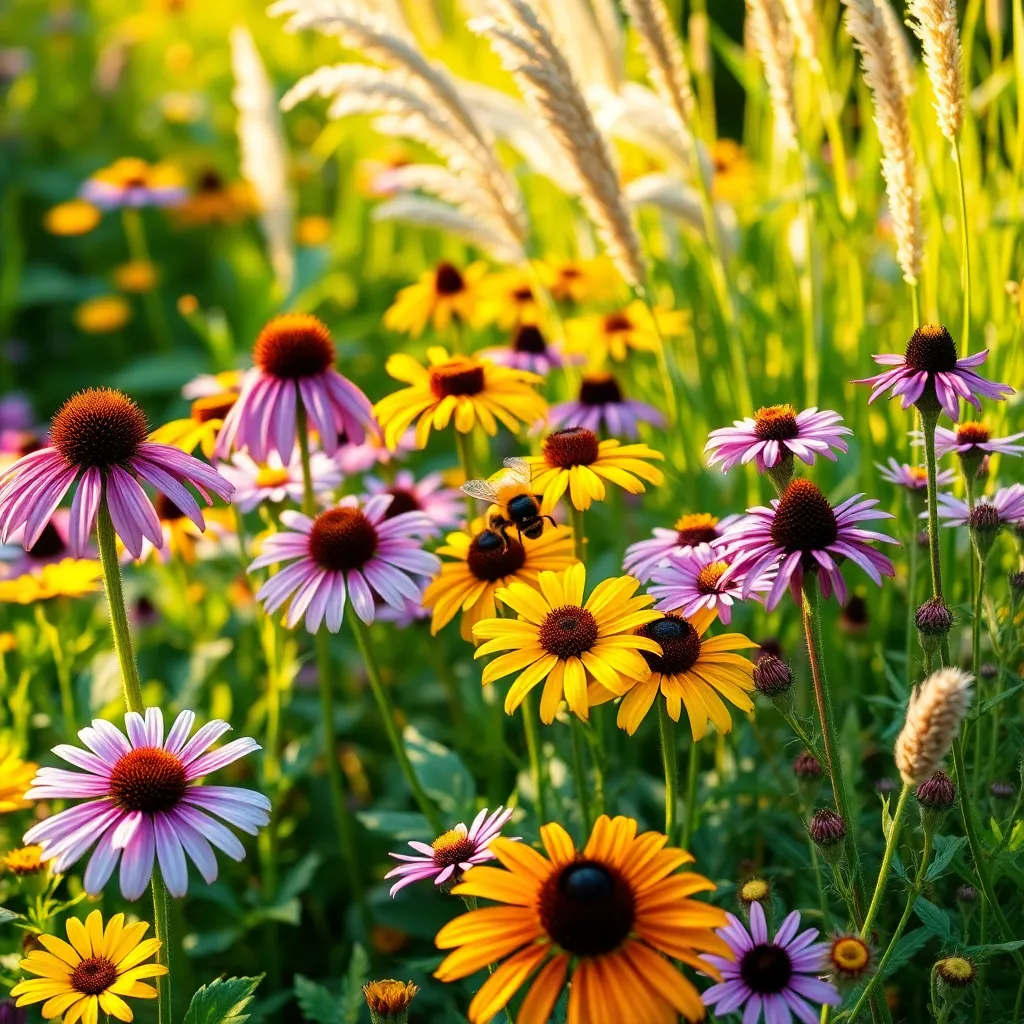
Creating a diverse garden environment can significantly enhance its appeal and ecological impact. Start by choosing a variety of plants that bloom at different times throughout the year, ensuring continuous food sources for pollinators.
Incorporate native plants as they are well-adapted to the local climate and soil conditions, requiring less maintenance. Native species also provide the best nectar and pollen sources for local pollinators, boosting your garden’s biodiversity naturally.
To further enhance biodiversity, include a mix of plant types such as trees, shrubs, and herbaceous plants. Layering these plants creates different habitats and microclimates, which are beneficial for a wide range of pollinator species.
Consider adding a small water feature like a birdbath or shallow dish filled with water and stones. This provides essential hydration for pollinators, particularly in hot, dry conditions, and invites more wildlife into your garden.
For advanced gardeners, experiment with companion planting techniques to naturally deter pests and encourage beneficial insects. Planting marigolds near vegetables, for example, can repel nematodes and attract pollinators, enhancing the garden’s health and productivity.
Regularly monitor your garden for invasive species that can disrupt the ecosystem. Remove these plants promptly to maintain a balanced environment where native flora and fauna can thrive.
Enhancing Local Ecosystems
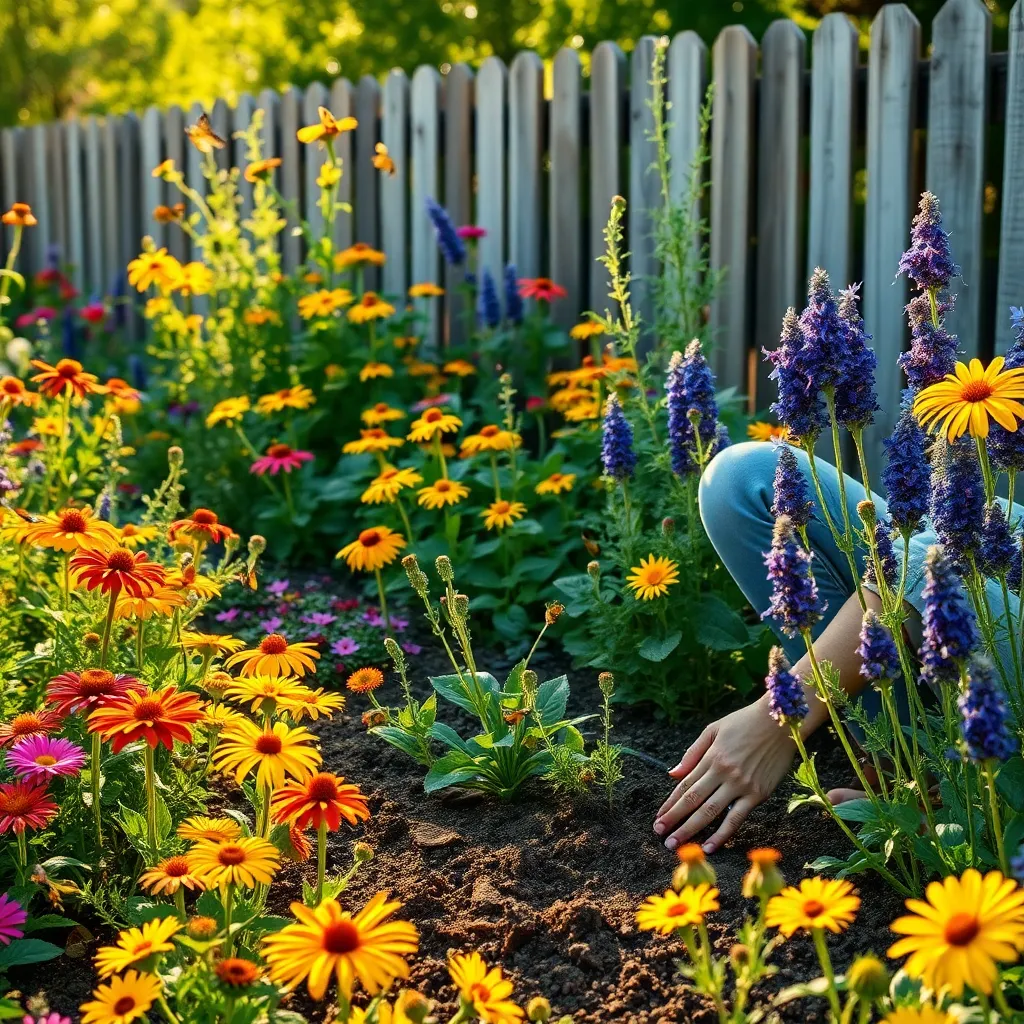
Creating a pollinator garden enhances local ecosystems by providing essential resources for bees, butterflies, and other pollinators. Incorporate a variety of native flowering plants to ensure a continuous bloom throughout the growing season, which attracts and supports diverse pollinator species.
To start, consider planting clusters of the same species together, as this makes it easier for pollinators to locate their preferred flowers. Choose plants with different bloom times, such as spring-flowering lupines, summer-blooming coneflowers, and fall-flowering asters, to offer a year-round buffet.
Ensure your soil is well-draining and rich in organic matter by adding compost or well-rotted manure before planting. Water your garden deeply but infrequently to encourage deep root growth, which can help plants withstand periods of drought; aim for about 1 inch of water per week, depending on rainfall.
Advanced gardeners can enhance their pollinator gardens by incorporating small water features or shallow dishes filled with pebbles and water to provide drinking spots for insects. Additionally, reducing pesticide use or opting for more natural pest control methods will make your garden a safer haven for pollinators.
Supporting Pollinator Populations
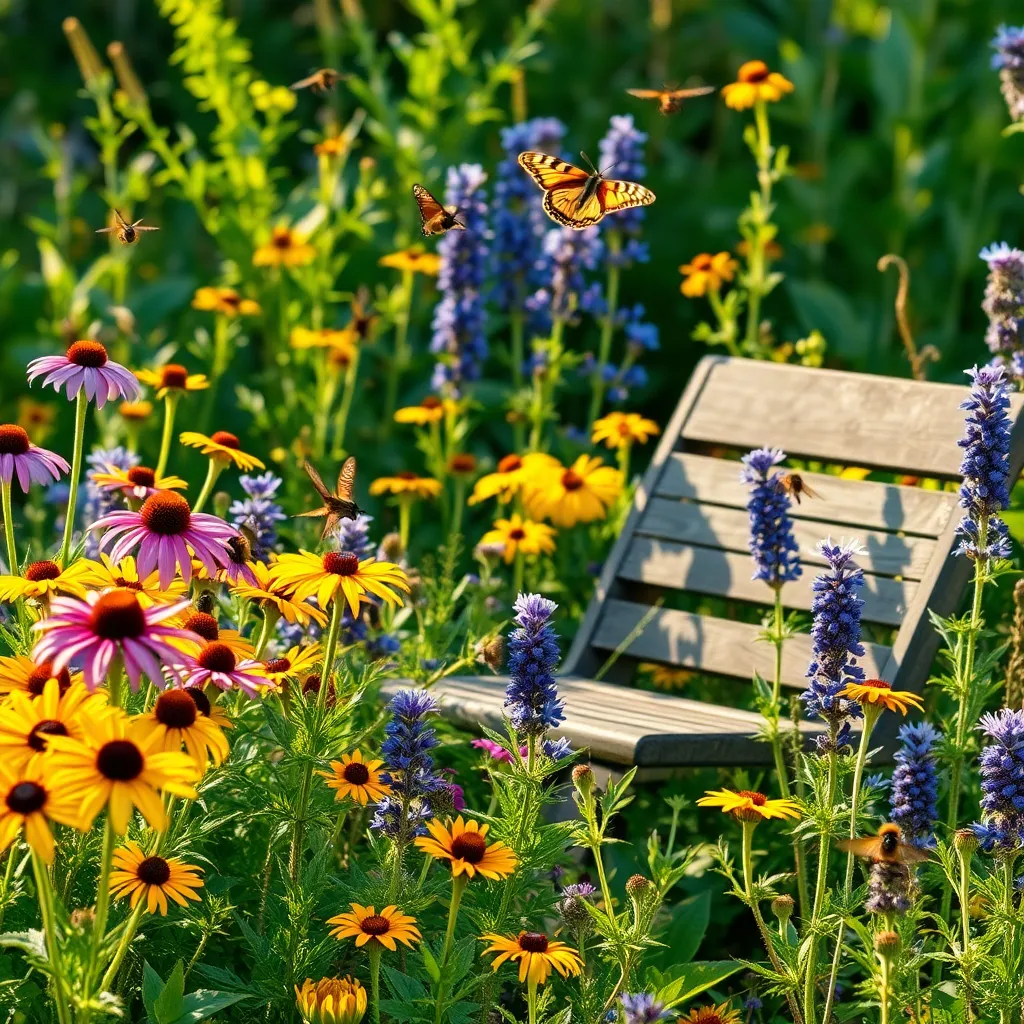
Creating a pollinator garden is a powerful way to support pollinator populations. By choosing a diverse range of plants, you ensure a continuous food supply for pollinators throughout the growing season.
Consider incorporating native plants, as they are particularly beneficial to local pollinators. Native species are often more resilient to regional pests and diseases, requiring less maintenance.
When selecting plants, aim for a variety of flower shapes, sizes, and colors. This diversity will attract a wider range of pollinators, from bees to butterflies and beyond.
Plant in masses rather than isolated specimens to make it easier for pollinators to locate their resources. Grouping the same species together in clusters of at least three to five plants is a good rule of thumb.
For beginners, start with easy-to-grow plants like lavender, coneflowers, and sunflowers. These plants are not only attractive to pollinators but also thrive in well-drained soil with moderate watering.
Advanced gardeners might experiment with incorporating early and late-blooming species to extend nectar availability. This can include spring bloomers like crocuses and late-season varieties such as asters.
Ensure your garden includes a water source, such as a shallow dish with pebbles or a birdbath, to provide hydration for visiting pollinators. Regularly refill and clean these sources to prevent stagnation and algae growth.
Improving Plant Health Naturally
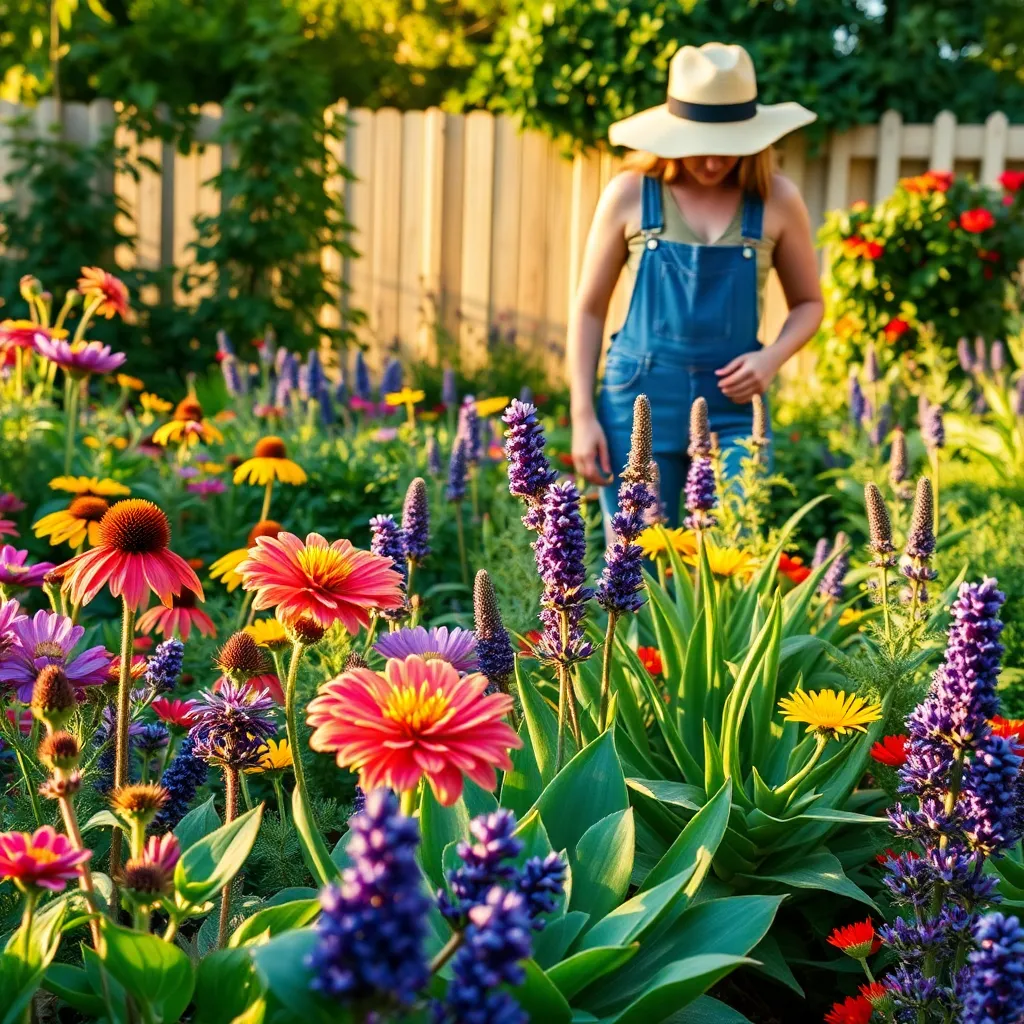
Creating a pollinator garden naturally enhances plant health by encouraging biodiversity. A diverse garden ecosystem can help control pests, reducing the need for chemical interventions.
To improve plant health, focus on choosing native plants that are well-suited to your local climate and soil conditions. Native plants require less maintenance, as they are adapted to thrive in the environment without needing excessive resources.
Regularly mulching your garden beds can significantly benefit plant health by retaining soil moisture and suppressing weeds. Use organic mulch like shredded leaves or bark, which also enriches the soil as it breaks down over time.
For advanced gardeners, consider implementing a crop rotation strategy in your pollinator garden. This practice can prevent soil nutrient depletion and interrupt pest cycles, promoting a healthier garden overall.
Creating Vibrant, Sustainable Landscapes
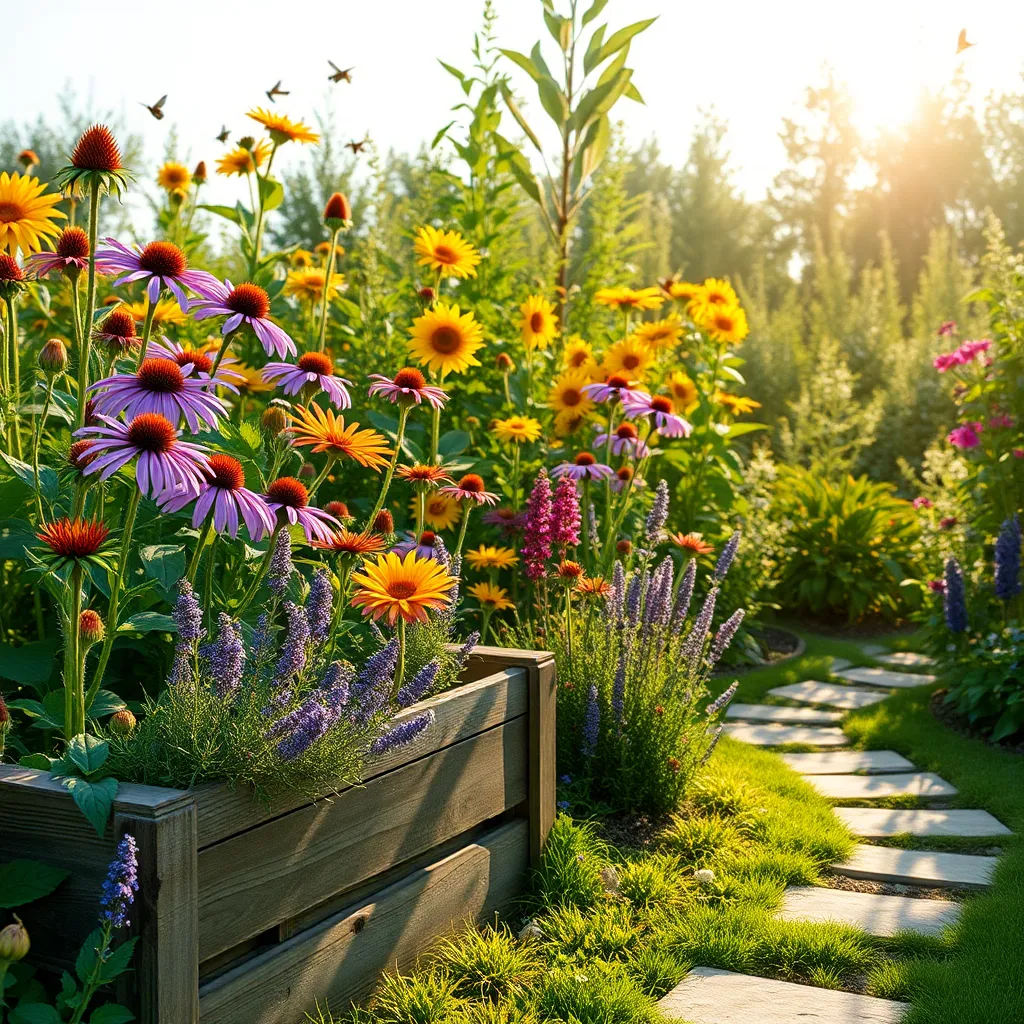
Creating vibrant, sustainable landscapes involves selecting a diverse range of plants that thrive in your local climate. By choosing native species, you not only reduce the need for excessive watering and fertilization but also support local wildlife, including pollinators.
Start by assessing your garden’s soil type, as this will guide your plant selection. Most native plants prefer well-drained soil, but some can adapt to clay or sandy conditions, so it’s beneficial to conduct a soil test if you’re unsure.
Incorporating a variety of flowering plants that bloom at different times ensures a continuous supply of nectar for pollinators. Consider planting clusters of the same species to make it easier for bees and butterflies to locate them.
For a practical approach, include a mix of perennials, annuals, and shrubs. Perennials like coneflowers and black-eyed Susans provide yearly blooms with minimal maintenance, while annuals can fill gaps in color and texture.
Watering practices are crucial in maintaining a sustainable garden. Install a drip irrigation system to deliver water directly to the roots, reducing evaporation and encouraging deep root growth.
Mulching around plants helps retain soil moisture, suppresses weeds, and slowly adds nutrients back into the soil as it breaks down. Use organic mulches, such as shredded bark or leaf litter, to keep your garden eco-friendly.
Conclusion: Growing Success with These Plants
In nurturing relationships, much like designing a pollinator garden, we explored five key concepts: cultivating open communication, fostering mutual growth, respecting individuality, building resilience through challenges, and celebrating shared achievements. These principles not only enhance our connections but also mirror the harmonious balance seen in nature’s ecosystems.
To start, consider dedicating time this week to nurture one of these aspects in your relationship—perhaps by engaging in a heartfelt conversation or planning an activity that encourages growth as a couple. Remember, small, consistent efforts can lead to flourishing bonds.
We encourage you to save this article as a handy guide for nurturing your relationships, just as you would tend to a garden. Bookmark it now so you can return whenever you need a gentle reminder of the steps that lead to a thriving partnership.
As you move forward, envision a future where your relationships bloom with the same vibrancy as a well-tended garden. Embrace the journey of growth, and watch as your connections deepen and flourish over time.

